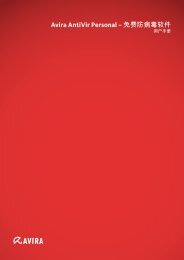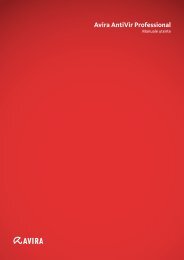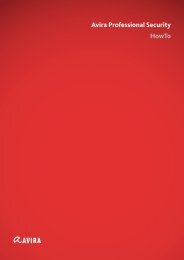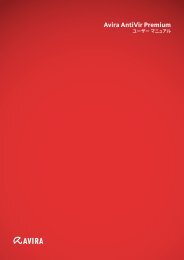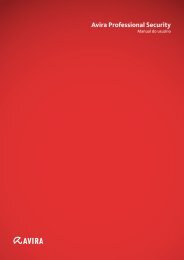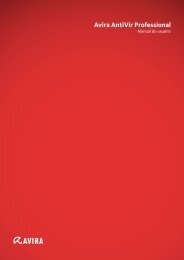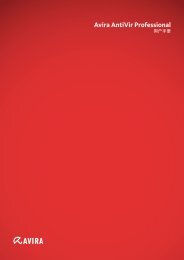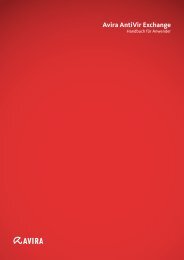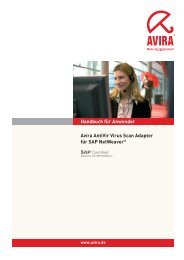User Manual
User Manual
User Manual
Create successful ePaper yourself
Turn your PDF publications into a flip-book with our unique Google optimized e-Paper software.
Reference: Configuration options<br />
If you want to create specific rules for an application, select the Advanced entry<br />
under Filtering.<br />
The Rules entry is then displayed in the Action column.<br />
Click on Rules to open the window for creating specific application rules.<br />
Specified application rules in the advanced configuration<br />
Using the specified application rules, you can allow or deny specified data traffic for the<br />
application or you can allow or deny passive listening to individual ports. The following<br />
options are available:<br />
Allow/ Deny Code injection<br />
Code injection is a technique for introducing code into the address space of another<br />
process to execute actions, forcing this process to load a dynamic link library (DLL).<br />
Code injection is used by malware, amongst other things, to execute code under cover<br />
of another program. In this way, access to the Internet in front of the FireWall can be<br />
hidden. In default mode, code injection is enabled for all signed applications.<br />
Allow/ Deny passive listening to the application of ports<br />
Allow/ Deny Traffic<br />
Allow or deny incoming and/or outgoing IP packets<br />
Allow or deny incoming and/or outgoing TCP packets<br />
Allow or deny incoming and/or outgoing UDP packets<br />
You can create as many application rules as you like for each application. The application<br />
rules are executed in the sequence shown (You will find more information under Advanced<br />
application rules).<br />
Note<br />
If you switch from Advanced to Basic filtering of an application rule, the already<br />
existing application rules in the advanced configuration are simply deactivated,<br />
not irretrievably deleted. When you select Advanced filtering again, the existing<br />
advanced application rules will be reactivated and displayed in the Application<br />
rules configuration window.<br />
Application details<br />
In this box you can see details of the application selected in the application list box.<br />
� Name - Name of the application.<br />
� Path - Full path to the executable file.<br />
Avira Professional Security - <strong>User</strong> <strong>Manual</strong> (Status: 30 Mar. 2012) 138



